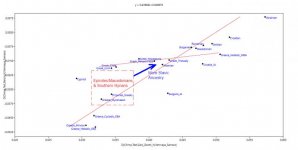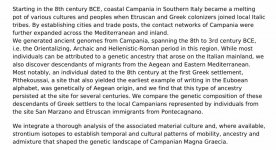Dianatomia
Regular Member
- Messages
- 403
- Reaction score
- 132
- Points
- 43
- Ethnic group
- Greek
The actual southern Illyrians (Taulanti, Bylliones, Albanoi, Dardanians) and other northern Hellenized people like Epirotes and Macedonians would be somewhere around here

Adding Slavic ancestry to Mycenean Greeks you get a perfect fit to modern Greeks/Albanians. Southern Illyrians and Epirotes/Macedonians + Slavic ancestry are a perfect model for both northern Greeks and Macedonians. Certainly not Thracian/Dacian or any other already-eastern shifted people.
There is a lot of free interpretation here. You can argue that modern Greeks received more of the same source which turned Minoans into Mycenaeans. By this very model Mycenaeans could be 85% Minoan + 15% Slavic. In retrospect, if the proto-Greek source came from Epirus/Thessaly/Macedonia region, it would only make sense that this region would be pulled even further from Minoans towards the same direction as the Mycenaeans are pulled. A possible Dorian invasion could have pulled more of this source further South as well.
Also, you can draw a straight line from Greek Crete to Greek Helladic_MBA, and have the Greek mainland exactly in between. In fact, Greek Thessaly is exactly between Greek Crete and Greek Helladic_MBA (MBA Thessaly).




